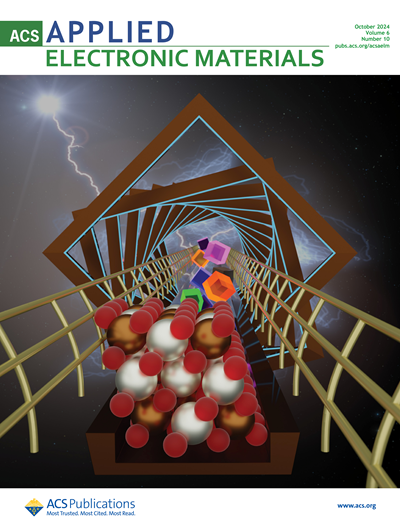Formulation and Characterization of Non-Toxic, Antimicrobial, and Alcohol-Free Hand Sanitizer Nanoemulgel Based on Lemon Peel Extract
IF 4.7
3区 材料科学
Q1 ENGINEERING, ELECTRICAL & ELECTRONIC
引用次数: 0
Abstract
Recently, hand sanitization has gained attention for preventing disease transmission. Many on-the-market convenient dermal sanitizers contain alcohol, which can be detrimental to the skin. Therefore, three nanoemulgel formulations (LN-F1, LN-F2, LN-F3) incorporating lemon peel extract (LE), and with various increasing concentrations of xanthan gum as a gelling agent and stabilizer, were developed and characterized as a novel alternative. All formulations showed non-Newtonian shear-thinning flow behavior, particle size values below 200 nm, and increasing zeta potential with higher xanthan gum concentrations. All nanoemulgel formulations exhibited greater in vitro phenolic compound release than free LE. LN-F2 (1.0% LE, 20.0% mineral oil, 20.0% Span 80, 4.0% Cremophor RH 40, 4.0% PEG 400, 0.5% xanthan gum, 50.5% dH2O) was selected as the optimal formulation due to improved characteristics. LE and LN-F2 potential cytotoxicity was assessed on MA-104, showing no significant cellular morphological alterations up to 10 mg/mL for both samples. LN-F2 showed in vitro antimicrobial activity against E. coli, S. Typhimurium, P. aeruginosa, S. aureus, L. monocytogenes, and C. albicans, as well as antiviral activity against phiX 174, but no effect against rotavirus (SA-11). In vivo, LN-F2 presented a removal capacity of 83% to 100% for bacteria and 89% to 100% for fungi. These findings suggest that the formulated nanoemulgel holds potential as a safe and effective antiseptic, providing a viable alternative to commercial alcohol-based formulations.基于柠檬皮提取物的无毒、抗菌和无酒精洗手液纳米凝胶的制备与表征
最近,手部消毒在预防疾病传播方面备受关注。市场上许多方便的皮肤消毒剂都含有酒精,对皮肤有害。因此,我们开发了三种纳米凝胶配方(LN-F1、LN-F2、LN-F3),其中含有柠檬皮提取物(LE),并添加了不同浓度的黄原胶作为胶凝剂和稳定剂。所有配方都表现出非牛顿剪切稀化流动行为,粒度值低于 200 纳米,Zeta 电位随黄原胶浓度的增加而增加。所有纳米凝胶配方的体外酚类化合物释放量均高于游离 LE。LN-F2 (1.0% LE、20.0% 矿物油、20.0% Span 80、4.0% Cremophor RH 40、4.0% PEG 400、0.5% 黄原胶、50.5% dH2O)因其更好的特性而被选为最佳配方。LE 和 LN-F2 对 MA-104 的潜在细胞毒性进行了评估,结果表明这两种样品在 10 毫克/毫升的浓度下细胞形态无明显改变。LN-F2 对大肠杆菌、鼠伤寒杆菌、铜绿假单胞菌、金黄色葡萄球菌、单核细胞增多性乳酸杆菌和白喉杆菌具有体外抗菌活性,对 phiX 174 具有抗病毒活性,但对轮状病毒(SA-11)无作用。在体内,LN-F2 对细菌的去除率为 83% 至 100%,对真菌的去除率为 89% 至 100%。这些研究结果表明,配制的纳米凝胶有望成为一种安全有效的杀菌剂,为商用酒精制剂提供了一种可行的替代品。
本文章由计算机程序翻译,如有差异,请以英文原文为准。
求助全文
约1分钟内获得全文
求助全文
来源期刊

ACS Applied Electronic Materials
Multiple-
CiteScore
7.20
自引率
4.30%
发文量
567
期刊介绍:
ACS Applied Electronic Materials is an interdisciplinary journal publishing original research covering all aspects of electronic materials. The journal is devoted to reports of new and original experimental and theoretical research of an applied nature that integrate knowledge in the areas of materials science, engineering, optics, physics, and chemistry into important applications of electronic materials. Sample research topics that span the journal's scope are inorganic, organic, ionic and polymeric materials with properties that include conducting, semiconducting, superconducting, insulating, dielectric, magnetic, optoelectronic, piezoelectric, ferroelectric and thermoelectric.
Indexed/Abstracted:
Web of Science SCIE
Scopus
CAS
INSPEC
Portico
 求助内容:
求助内容: 应助结果提醒方式:
应助结果提醒方式:


